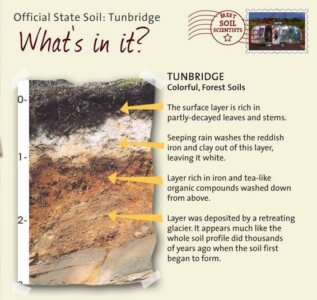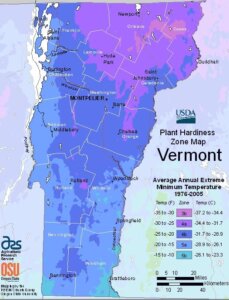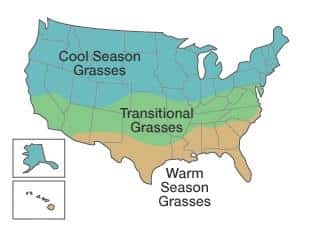If you are a Vermont home or business owner looking to establish a healthy new lawn, you’re probably wondering what the best grass is for your property. If so, you’re not alone: Many people are curious about what type of grass works well in a cold climate. But there are a few things to consider when making your choice.
For example, how much sun does your area get? What kind of soil do you have? What are your water levels? Are there pests and common diseases? These questions can help you narrow down your choices so that you choose the right grass seed for your property.
So whether you’re looking to reseed a new lawn or enhance an existing one, it’s essential to know what type of grass will grow best in your area. Here’s what you should know about Vermont’s soil characteristics, grass seed growing conditions, and the best types of grass for your area.
Vermont Soil Characteristics
Because of Vermont’s northern location in the United States, most of the soil’s parent materials were brought in from the glaciers that covered New England about 12,000 years ago. Most of the state is covered in the official state soil, Tunbridge, which is a well-drained, loamy, acidic soil that was formed in a glacial till.
Some of the most common categories of parent material in the Vermont area are:
- Glacial till is a mixture of particles varying in size and shape that was deposited directly by glaciers. Glacial till has not been worn smooth, so its texture can be sandy or silty with sharp angular edges and corners.
- Glacial outwash deposits are sandy and gravelly bits of rock that were deposited by running glacial meltwater. They are usually located along streams and rivers or above floodplains. They consist of layers of soil particles of similar sizes.
- Lacustrine deposits are finer soil particles like silt or clay that have settled in the bottom of water environments. They have been deposited in still water in glacial lakes formed when a glacier blocked river and stream valleys.
- Alluvial deposits are found directly by stream channels. They were deposited by streams and bodies of water in recent times. They may be loamy, silty, or sandy, depending on the speed of the floodwater that deposited the material.
- Organic deposits are primarily made up of decomposed plant material.
The presence of all these materials directly affects the type of topsoil found in Vermont. Here’s another unique aspect about the soil in Vermont — if you dig a couple of feet below the surface, you’ll hit a layer of non-calcareous bedrock. This bedrock is found between 20 and 40 inches below the surface of Tunbridge soil.
Some of the most common soil types are muck and peat, rockland, and a silty or clay-like texture. The soil can also be categorized based on average temperatures:
- Mesic soil has a mean annual soil temperature of 46°F to 59°F, which means it has an average moisture content that sits somewhere between wet and dry. Many seed mixes, especially ones that can attract wildlife and pollinators, are designed to thrive in mesic soil.
- Frigid soil has a mean annual soil temperature greater than 30°F but less than 46°F. In summer, frigid soil gets very warm compared to cryic soils.
- Taken from the Greek word kryos, which means coldness, cryic soils are very cold. They have a mean annual temperature lower than 8C but do not have permafrost.
With these topsoils and your local grass growing conditions in mind, you can choose a suitable grass seed for your Vermont property.
Vermont Grass Seed Growing Conditions
Before you can determine your grass growing conditions, it’s a good idea to become familiar with your area’s plant hardiness zones. When considering the USDA Plant Hardiness Zone Map, you’ll see that most of the state resides 2a to 5b zones, whereas the coast ranges between 6a and 7a.
These hardiness zones reflect the average minimum temperatures for an area. Because temperatures can get very low in Vermont, buying cold-hardy plants, like cool-season grasses, is usually the best option. You’ll experience fewer losses in extreme temperatures if you plant a type of grass that can thrive in the cold.
Here are most of the plant hardiness zones found in Vermont:
- 1a (-60 to -55 °F)
- 1b (-55 to -50 °F)
- 2a (-50 to -45 °F)
- 2b (-45 to -40 °F)
- 3a (-40 to -35 °F)
- 3b (-35 to -30 °F)
- 4a (-30 to -25 °F)
- 4b (-25 to -20 °F)
- 5a (-20 to -15 °F)
- 5b (-15 to -10 °F)
- 6a (-10 to -5 °F)
- 6b (-5 to 0 °F)
- 7a (0 to 5 °F)
The zone map is a standard used by government officials and hobbyist gardeners and growers, as it helps them determine the specific plants that will grow well in a given location.
So, when you are looking for the appropriate speed for your hardiness zone, be sure to double-check that the seed can thrive in your area or use a Seed Selector Tool.
When Should I Plant Grass Seed in Vermont?
The best time to plant grass seed in Vermont is in late summer and early fall, between August and September.
However, spring can also be a good time as long as you wait until average high temperatures start to reach the 60s and the soil is dry enough that you’re not making mud.
Summer planting, while not ideal, can work too if you have irrigation available to keep the seeds from drying out during germination.
What Is the Best Grass Seed for Vermont?
Cool-season grasses are ideal for Vermont lawns. Some grass seed mixtures with transitional grasses work well, too. You’ll want to avoid warm-season grasses, which are more suitable for the southern states.
Cool-season grasses have active growth much earlier in the growing season, in early spring to mid-spring. They stay green longer in the fall before going dormant. They can withstand colder temperatures and will reemerge in the warmer months, even after frigid temperatures each winter.
Warm-season grasses have active growth in the late spring and go dormant in early fall since they don’t have as much cold tolerance. They are most commonly used throughout the Southeast and Southwest.
Transitional grasses are unique because you can plant them across the United States’ transitional zone, where there is a mix of cool and warm temperatures throughout the year. These grasses can withstand a wide range of temperatures safely.
Here are some of the best cool-season grass types for Vermont lawns:
Kentucky Bluegrass
Kentucky bluegrass is a favorite among landscapers and property owners. It is lush, dense, and durable, with a deep yet bright green color that remains vivid throughout most of the year.
It is ideal for properties with high foot traffic and compacted soil, so families with children and dogs will want to opt for a Kentucky bluegrass blend. This grass can thrive almost anywhere in the U.S. above the transitional line as it will grow back even after freezing, drought, and heavy usage.
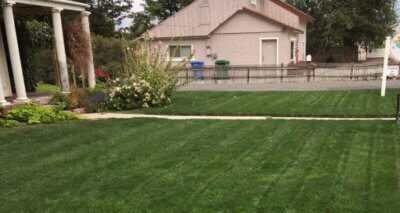

Kentucky bluegrass will tolerate limited shade but does best in full sun. Certain bluegrass blends are more tolerant of shaded lawns. However, Kentucky bluegrass does require some fertilizing maintenance and plenty of watering to stay healthy.
Perennial Ryegrass
Perennial ryegrass is one of the most widely-used grasses in the United States, as it can be found in permanent lawns in the north or used as temporary lawn in the south during winter. Because of its quick germination, easy establishment, and lush, bright green coloring, it’s a favorite among landscapers and property owners.
It is ideal for properties with moist, well-drained, and fertile soils, as it’s not very drought-tolerant.
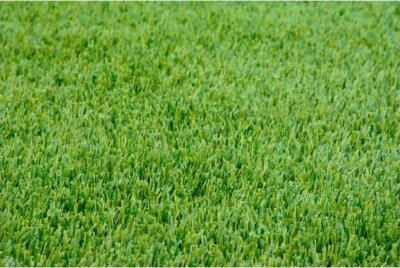

Still, perennial ryegrass is excellent for first-time property owners as it establishes quickly and can help “nurse” other grass species that may be establishing slowly. Therefore, you can also use this as overseed for lawns that need a little bit of assistance.
Perennial ryegrass prefers full-sun exposure, but it’s not tolerant of extreme heat, which is why it does exceptionally well on Vermont lawns. However, because of its low drought tolerance, it must be irrigated during hot and dry periods, although these are rare in Vermont.
Some new perennial ryegrass varieties are bred to combat disease, withstand colder temperatures and heavier traffic, and may be easier to mow.
Fescue
Fescue grass is one of the most adaptable and versatile grasses, with several subtypes like tall fescue and fine fescue, which can be found almost anywhere in the U.S.
Fine fescue has long, thin blades and is a popular choice for homeowners that are looking for long-lasting durability without the high level of fertilization or irrigation maintenance that other species require. It also has the best shade-tolerance of all grasses.
Tall fescue, which is a great choice for Vermont properties, is ideal for lawns with high traffic, so it’s perfect for households with young children and dogs. It is generally resistant to heat, drought, and disease, even during the summer months.
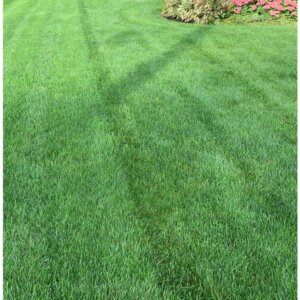

However, although drought-tolerant, it’s a good idea to water your fescue during dry spells. It can grow in shady to sunny conditions, as well as wet and dry conditions, as long as it’s taken care of.
Recommended Lawn Seed Mixes for Vermont
Mixing grass seed is a great way to enhance your lawn and personalize a blend so that it meets your property’s specific needs.
For example, say that you live on a shady property where pests are common. The right mixture could draw upon important qualities from various blends to help combat common diseases and enhance shade tolerance.
In Vermont, you need a mixture of something that can withstand freezing winters and cool summers. Look for standard mixes that are cold-tolerant and can grow in shady areas as well as the full sun, such as as these blends:
Conclusion
At the end of the day, every property owner wants a healthy lawn that will thrive throughout the year.
Vermont requires cool-season grasses because of the colder temperatures and glacial soil makeup. Some of the best grass blends are Kentucky bluegrass, perennial ryegrass, and fescue. You can also find customized combinations that you can plant to combat specific issues in your lawn, whether it’s pests or shade tolerance.
The best part is that no matter what you’re looking for, getting the right grass seed is easy: Nature’s Seed offers high-quality seeds that are personalized to your region and your lawn’s specific needs. Visit our online store to get started today.
